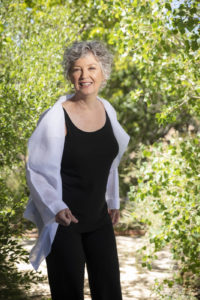
The 5 S’s & Your Nervous System
1) Be SEEN—meaning our inner life is perceived, made sense of, and responded to in a timely and effective manner. The attunement of others helps us “feel felt” in the world.
2) Be SOOTHED—meaning that our distress is noted and the interactions with others helps us to feel calmer, more at ease. This interactive soothing becomes internal soothing as we develop.
3) Be SAFE—meaning that we are protected from harm and also that those we care about are not the source of terror. This is how we come to have a sense of trust in others.
4) Be SECURE—meaning that we develop an overall internal model of solidity, enabling us to feel that in general, we are worthy of being seen, soothed, and safe and that we can rely on others for this important sense of connection.
In addition, a “fifth S” might be the notion of “SENSE-making”—meaning how we rely on our interactions with others to make sense of the world. This making sense process enables us to feel a coherence between what we experience ourselves and how we are told the world actually is. With a coherent sense-making experience, we have what some researchers term, “epistemic trust.
But if your family has not in the past provided these S’s of security for you or others, then this list may be helpful to keep in mind as you enter this holiday season. We have a saying that you can ‘name it to tame it,’ meaning that if you name an emotional state it will help you create equilibrium in your life. If you are at the dinner table and Aunt Mary doesn’t see you as you are discussing some important issues in your life, when the feeling of disconnection arises, say to yourself, with your inner voice, ‘Ah—how fascinating—agitation from not being SEEN. That’s one of those S’s of security, fully missing here from her reactions to me, no wonder I have this unsettling feeling of disconnection.’ You may not be able to change Aunt Mary, but you can change how you understand and respond to her non-secure ways of interacting with you.
What Are Attachment Styles?
An attachment style is a specific pattern of behavior in and around relationships. There are four adult attachment styles: secure attachment, anxious attachment, avoidant attachment, and fearful-avoidant (aka disorganized) attachment.
Attachment style includes the way we tend to respond emotionally to others, how we usually interact with partners in relationships, and how we behave when it comes to relationships in general, according to therapist Alyssa “Lia” Mancao, LCSW.
Your attachment style is based on how well you learned as an infant, toddler and young child to trust that the world is a safe place, and the people taking care of you were doing that. Or not. 
Here’s the thing … human beings are hardwired for connection with other human beings. We’ll die if we aren’t fed and given water, protected from the weather, and kept warm and dry. Humans also need (need, not want, but need) to feel cared for and loved by others.
And we need to be connected with and love others, as well.
Do You Feel Emotionally Safe?
But when any of those caretaking things don’t consistently happen, the young human can learn that the world isn’t a safe place, and s/he can’t trust that s/he’s taken care of.
Then, all sorts of self-protective strategies start developing which may sort-of work when you’re young, but can cause the adult you to self-sabotage your life away.
Fighting, running away, freezing in place, or people pleasing are what that looks like as you get older. Those are the typical responses that get triggered in the nervous system when early attachment is disrupted or violated.
Basically, ” … the last 50 years have seen the accumulation of studies supporting … the idea that the emotional quality of our earliest attachment experience is perhaps the single most important influence on human development.”
That means how your caretakers were able to understand what you needed before you were able to talk, and take care of what you needed with gentle patience and love and kindness, is the most important factor in how you continued to grow into yourself as a secure, trusting teenager and adult.
Most parents don’t consciously intend to hurt their children. But the truth is that most parents are really busy. And most haven’t been taught how critically important those first few years are in establishing a secure foundation for healthy, secure emotional attachment. Finally, not every parent was cared for by their parents in the ways that lead to secure attachment.
Secure Attachment
Secure attachment is the Gold Standard for healthy, ideal relationships. About 50% – 65% of people learned to be securely attached as children.
If you’re securely attached, you look at yourself and others with a glass-half full, positive outlook. You know that you’re emotionally safe, and you know how to take care of your needs. You trust other people and the universe to usually do the right things.
Almost everyone has a little bit of each of the four attachment styles, but if you’re securely attached, you don’t swing too far into avoiding relationships (avoidant), freaking out about them (anxious), or a confusing and chaotic both/and and either/or (fearful avoidant).
Anxious Attachment
Clingy, needy, high maintenance, high-need are some of the ways anxiety in relationships can manifest. Someone with an anxious attachment style might need a lot of reassurance, and can subconsciously worry about being abandoned or rejected by someone who’s important to them.
Whether it’s in an intimate, romantic relationship, with friends and family, or in the workplace, this kind of anxiety can cause you to become too people-pleasing. You can give yourself away without even realizing it.
And it’s not because there’s something wrong with it. It’s how you learned to navigate the world as a very young child who had to act this way to get her needs met.
About 20% of adults have an anxious attachment style.
Avoidant Attachment
Avoidant attachment style folks are afraid of emotional intimacy. They’re scared to get too close to anyone. Oftentimes, they struggle with not feeling a lot of emotions, especially anything that makes them feel too vulnerable or weak.
Underneath it all, they don’t believe their needs can be met in any relationships, because their needs weren’t met as young children.
Diane Poole Heller, Ph.D., the internationally renowned expert in attachment theory and healing trauma, writes:
Without intimate nurturance, the limbic system is neurologically starved and does not receive the signals required for building social responses nor the frontal brain stimulation that develops bonding.
This disconnection extends first to the parents and then to all other relationships. Though some of our cultural models extol the virtues of this self-reliant “Lone Wolf” behavior (think X-man, Wolverine, or the quintessential “Desperado” cowboy icon), actually living with such a lack of emotional attunement can be increasingly isolating.
Most often, people with an avoidant attachment style keep a fair amount of distance between themselves and anyone else. They’re detached, as though they don’t care as much about the relationship as you do. It’s hard for them to sustain a deep level of emotional connection — they literally don’t know how to do that, and don’t trust that it’s safe to do so.
So they’ll leave. Or if they stay, they’re not really all in, because they don’t know how to be.
25% of people move through their lives with an avoidant attachment style. That’s a lot of people! It’s a lot of people who are suffering from the lack of true connection with other people because they’ve been taught not to believe in it.
Until someone who suffers from an avoidant attachment style learns how to become more securely attached, they are just not available for healthy, true, and vulnerably open connection.
Disorganized (Fearful-Avoidant) Attachment Style
This attachment style is pretty rare, and isn’t very well researched. “I love you, I hate you,” or “I hate you, but don’t leave me” are things that people with this attachment style can say, or act out.
As Diane Poole Heller, Ph.D., explains:
A Disorganized Attachment style results when caregivers present double-binding messages to children. This is sometimes called a “paradoxical injunction.” An example of this is a “Come here, go away. Come here, go away.” message. Parents create situations for the child that are unsolvable and un-winable. For example, a parent may ask a child to do a task such as sweep the floor. When the child begins to do so, the parent criticizes how or when they do it. The child may attempt to do the task again taking the direction but is criticized again. The parent may then deride the child for not doing what the parent has asked them to do and punish them for not doing the job.
When exposed to these impossible-to-resolve situations over-and-over again, the child develops a pattern of not solving problems. When parents set up these interactions that are frightening, disorienting, inherently disorganizing, and which sometimes involve violence, the parents become the source of fear. The disorganized pattern arises in the child when there is a desire to be close to the parent as an object of safety, conflicting with a drive to detach from a dangerous and confusing caregiver. For the adult, this may mean being held hostage emotionally by the conflict of the desire for intimacy and was well as the fear of it.
How to survive toxic holidays is often a work in progress, meaning you’ll make progress, and then regress. But as long as you’re generally moving in the direction of emotional health, setting solid boundaries, and working toward your own secure attachment, you’re on the right path.
The Santa Fe Therapist Approach to Healing Attachment Trauma
I’m Melanie, the Santa Fe Therapist. It’s totally possible to heal early attachment trauma! Yes, you can survive toxic holidays when you better understand your attachment style. You can learn how to become securely attached, no matter what happened back in the day, or how many relationships you think you’ve screwed up, or how toxic the holidays can be. 
Part of that healing includes learning how to love yourself into wholeness.
In my experience, learning to love yourself can be a lifelong journey. Emotional and spiritual healing and wellbeing happen when you deepen into your true self, uncovering, processing, and releasing layer after layer of learned self-doubt, harsh Inner Critic and Perfectionist parts, even self-loathing.
Then, you can begin replacing those unhealthy layers with what’s good and true and authentic for you.
It’s really about understanding how to feel emotionally safe in a dangerous world. When you can do that, you’re securely attached, and the whole world opens up for you in beautiful and empowering ways.
Relationship Therapy & Attachment Styles
My compassionate, creative approach as therapist who’s trained in CBT, DBT, and neuroscience, as well as healing sacred wounds, weaves together my ability to hear below the surface of the words, advanced degrees, years of specialized training, professional experience, and healing my own attachment wounds.
I also have advanced training in working with attachment styles and trauma healing.
One of my specialities is giving women the tools to cope with intense emotions. I combine Western systems, Eastern wisdom, gentle Earth-based practices, as well as creative, innovative ideas to help you feel confident about manifesting and maintaining healthy, vibrant relationships as quickly as possible.
My clients usually work with me once a week for 6 to 12 months. As we work together, you’ll be getting tools for long-term success and learning and using strategies and techniques to serve you for many years.
You’ll work hard for sure. But won’t all be horrible and terrible! I love sharing ideas about good books and films and laughing together once in a while.
Please know that I welcome ongoing conversations about making therapy the best experience it can be for you.
My hope for you is that you’ll feel safe every step of the way.
The Santa Fe Therapist Offers Online Counseling in Santa Fe, NM
Online therapy helps stressed and struggling women find the time away from day-to-day pressures to settle into their Wise Woman selves, access their inner knowing and intuition, cope with challenges, and learn new techniques to help them heal and move forward with confidence and joy.
I strongly believe in the power of online counseling. Along with the research that proves its effectiveness, I see the positive benefits for my clients every week. If you’ve got questions about online therapy, please click here.
Online counseling from anywhere in New Mexico, including Santa Fe, Albuquerque, Taos, Los Alamos, Pecos, Las Vegas, Tesuque and El Dorado.
What to do Now to Begin Healing
You don’t have to suffer alone anymore. Please, send me an email, and let’s schedule a free, 15-minute phone consultation: melanie@melanieharth.com.
Other Services From The Santa Fe Therapist
The Santa Fe Therapist specializes in several areas of health, wellbeing, healing and recovery. We know that one size never fits all. Our services are individualized to each client, and are based on your values, your needs and desires, and your goals.
We offer individual adult counseling and guidance in Santa Fe NM for:
- dealing with overwhelming angst and despair
- anxiety help
- depression help
- emotional and spiritual healing
- processing grief
- overcoming low self-esteem
- learning how to make peace with the present
- PTSD and CPTSD/trauma
- helping you manage stress
- online therapy

